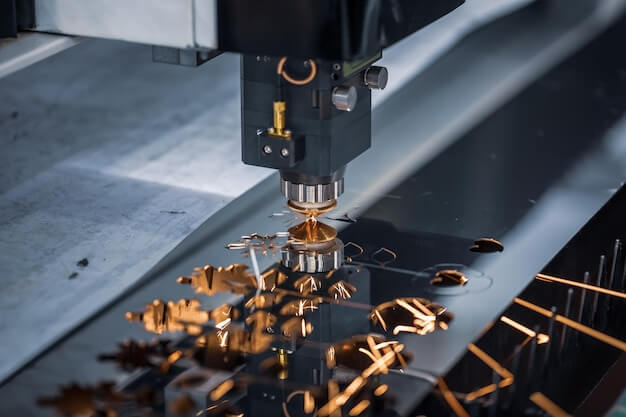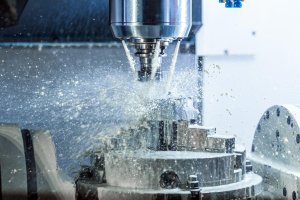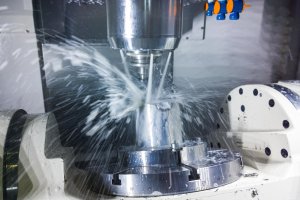Laser Cutting Aluminum: An Introduction
The process of laser cutting aluminum is a potent technology integral to the manufacturing sector. It involves focusing concentrated beams of laser light on an aluminum sheet to create intricate and precise cuts with minimal wastage or deformation. This advanced method allows for unparalleled precision and versatility, transforming ordinary sheets of metal into genuine works of perfection. A prime example is its application in the automotive industry, where car manufacturers harness laser cutting’s accuracy to make specific shapes and sizes efficiently with a high degree of repeatability. As such, laser cutting has emerged as a pivotal player in revolutionizing contemporary manufacturing practices by enhancing productivity, efficiency, and quality.
Understanding Different Types of Lasers Used for Cutting Aluminum
Aluminum, known for its lightweight and strong properties, is a popular material in various industries, including automotive and aerospace. Cutting aluminum with precision requires understanding the types of lasers best suited for the task. Among the lasers used, fiber lasers stand out for their efficiency in cutting aluminum sheets. This is due to their ability to focus a high-density beam that easily cuts through aluminum, making them an ideal choice for intricate designs and high precision requirements.
For those seeking precision in aluminum cutting, exploring a Precision Machining Service can provide access to advanced fiber laser technology. This service ensures that even the most complex aluminum parts are manufactured with the highest accuracy, leveraging the capabilities of fiber lasers to produce clean and precise cuts.
Comparison of Laser Types for Aluminum Cutting
| Laser Type | Efficiency | Material Compatibility | Application |
|---|---|---|---|
| Fiber Lasers | High | Aluminum, Metals, Alloys | Precision Cutting, Engraving |
| CO2 Lasers | Medium | Non-Metals, Some Metals | General Cutting, Engraving |
| Crystal Lasers | Medium | Metals, Non-Metals | High-Precision Applications |
While CO2 and crystal lasers also find applications in cutting various materials, fiber lasers are particularly advantageous for aluminum due to their specific wavelength, which aluminum absorbs more efficiently. This absorption rate results in cleaner cuts and faster processing times, making fiber lasers a preferred choice for aluminum cutting tasks.
In conclusion, when precision and efficiency are paramount in aluminum cutting, fiber lasers, accessible through specialized services like Precision Machining, offer the best solution. Their compatibility with aluminum, coupled with the ability to produce high-quality cuts, makes them an invaluable tool in the manufacturing process.
Types of Lasers Used for Cutting Aluminium
The laser cutting process adopts several types of lasers, each presenting distinctive features and benefits. The three fundamental lasers are CO2, Nd:YAG, and fiber lasers. The Carbon Dioxide (CO2) Laser is robust and highly effective, typically utilized in most high-power laser cutting operations due to its efficiency of around 20%. Meanwhile, the Neodymium-doped Yttrium Aluminum Garnet (Nd:YAG) laser can be used in lower-powered scenarios as it offers a lesser degree of speed and precision compared to the CO2 laser while maintaining a commendable level of efficiency. The recent innovation into Fiber lasers has revolutionized the industry. They boast superior beam quality, higher power levels, more efficient energy use, and an overall condensed size compared to their predecessors. However, they might come at a higher cost. Therefore, choice of the laser type varies based on specific project requirements, including considerations like productivity, accuracy, energy consumption, and budget.
Advantages of Using Laser to Cut Aluminum
Utilizing laser technology for cutting aluminum offers numerous benefits in the manufacturing industry. One significant advantage is increased efficiency. The precision and speed of laser cutting accelerate production times, enabling manufacturers to meet higher demand rates. For example, industries that require intricate design elements can leverage the preciseness of lasers to cut detailed patterns promptly. Furthermore, laser technology contributes to sustainable practices by reducing waste. This degree of accuracy leads to less material being discarded during the production process because errors are minimized. Hence, laser cutting aluminum not only improves production timelines and outcomes but also promotes resource conservation.
Challenges and Solutions in Laser Cutting Aluminum
Laser cutting aluminum presents specific challenges. Its high reflectivity and thermal conductivity can lead to power inefficiency and inaccurate cuts. Additionally, the generated heat causes rapid hardening, making continuous cutting problematic. However, these issues can be mitigated with various techniques. Using a laser with shorter wavelength significantly reduces reflectivity, promoting efficient energy absorption. Introducing an assist gas like nitrogen or oxygen aids in removing the cut material promptly, minimizing heat-induced distortion. Furthermore, constant monitoring of cutting speed and laser power ensures accuracy and precision. These adaptations transform the intricate process into a streamlined operation, effectively carving perfection out of aluminum.
Role of Laser Cutting Aluminum in Various Industries
Laser cutting aluminum has significantly transformed numerous sectors, revolutionizing production lines with precision and efficiency. At the forefront is the aerospace industry; this technology assists in developing intricate components for aircraft manufacturing, enabling unmatched accuracy which is ultimately crucial for safety reasons. The automobile manufacturing sector also heavily relies on laser cutting aluminum. Companies such as Tesla deploy it to achieve complex cut geometries that are designed for enhanced vehicle functionality and aesthetics. Besides these industries, architectural firms have taken advantage of this technique, using it to deliver outstanding structural designs through meticulous shaping of aluminum panels. Lastly, the medical equipment sector employs laser-cut aluminum for high-precision instruments and devices, reiterating the versatile industrial application of this technology.
Future Prospects in Laser Cutting Aluminum
The future prospects of laser cutting aluminum hold immense potential, significantly impacting productivity and efficiency. Technological advancements are projected to continuously revolutionize the industry – providing improved accuracy, speed, and versatility. For example, the advent of fiber lasers could elevate precision levels and operate at exceptionally high speeds with minimal waste production. Moreover, advanced software algorithms might drive automation processes, eliminating manual labor-intensive tasks, reducing errors thereby enhancing productivity further over time. This consistent evolution strives for perfection, transforming raw aluminum into intricate designs while conserving resources and boosting economic viability.
Related Posts
- Masterful Precision: Elevating Aluminum Craftsmanship with Laser Cutting
Laser cutting penetrates and slices through materials with a high-powered laser beam guided by CNC (Computer Numerical Control). The process achieves high-precision cuts, intricate detail work, and polished edges on…
- Precision Engineering: Bead Blasting for Aluminum Components
In the realm of precision engineering, achieving impeccable surface quality and dimensional accuracy is paramount. Bead blasting technology has emerged as a versatile solution for refining aluminum components, offering meticulous…
- Exploring Laser Cutting: Techniques, Advantages, and Sectors
Introduction to Laser Cutting Technology Laser cutting represents a precision technology where a high-powered laser is directed at material to cut or etch designs as dictated by computer-controlled parameters. This…








